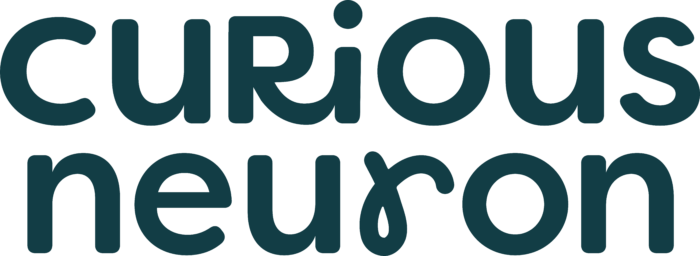WRITTEN BY MARION VAN HORN, PH.D. IN NEUROPHYSIOLOGY.
If you’re pregnant, your doctor will recommend that you take a folic acid supplement. In all the excitement that comes with being pregnant (and in all the exhaustion and morning sickness!) you will probably follow your doctor’s advice. But you might not have the energy, or headspace, to ask why it’s so important.
Let’s start at the beginning. Mr. Sperm meets Mrs. Egg and a miraculous series of biological events ensues. Cells start dividing, DNA is replicated and a tiny embryo begins to takes form. All of this requires a number of vitamins and micronutrients, including folate (the naturally occurring form of folic acid), to actively support the rapidly growing tissues.
One early developmental milestone that has been found to be highly dependent on adequate levels of folate is the formation of the neural tube. Early in development, embryonic cells start to line up and fold around themselves to form a long tube-like structure, which eventually becomes the spinal cord and brain. Incomplete closure of the neural tube could result in the exposure of underlying neural tissue and lead to a neural tube defect, like spina bifida.
The relationship between folate deficiency and neural tube defects was recognized in the 1960s. Randomized controlled studies in the 1990’s confirmed this hypothesis by specifically showing that supplementing with folic acid (the synthetic form of folate) greatly reduces the risk of developing a neural tube defect.
Today it is routine to recommend a folic acid supplement to pregnant women. However, it is important to know that the closure of the neural tube occurs between the 20th and 28th day after conception, which is often before you see your doctor for the first time, so you should consider taking folic acid a few months before you even get pregnant.
While you can take a folic acid supplement, a more bioavailable form of folate is found in food. Folate comes from the Greek word folium, which means leaf, so perhaps not that surprisingly your best source of folate comes from dark, leafy greens like spinach and swiss chard. Other sources of folate include cooked beans, edamame, peas, some citrus fruits and fortified processed foods.
But wait! There’s more! What about choline?!
A less talked about, but arguably equally important brain-building micronutrient is choline. A number of biological processes, including the synthesis of cell membranes and DNA, relies on adequate levels of choline (Korsmo HW et al. 2019). In particular, it acts as a methyl donor and can thus influence gene expression through modification of DNA and histone methylation (Blusztajn JK et al. 2012). Moreover, choline is needed to make the neurotransmitter acetylcholine, which influences many processes in the developing brain (Abreu-Villaça Y et al. 2011).
Recent studies have shown that many women are deficient in choline during pregnancy, in part because of the fetus’ need for large amounts of choline for the synthesis of cell membranes – which is happening a lot when you are building a tiny human in your own body. Like folate, choline deficiencies have also been linked to neural tube defects.
Recent studies evaluating the consumption of a higher maternal choline intake throughout the third trimester of pregnancy have found lower cord blood cortisol concentrations in the newborns of mothers consuming higher choline (Jiang et al. 2012). Interestingly, higher cortisol responses in response to stress have been associated with increased risk of developing a mental illness later in life, suggesting that choline deficiencies may put the child’s mental health at risk later in life (Xiong F et al. 2013).
Surprisingly, despite accumulating evidence for its importance, choline is still absent from most prenatal vitamins!
So where does choline come from?
While a small amount of choline can be made by the body, we get most of our choline from our diet. It is recommended women consume 450mg of choline per day, and pregnant, lactating and menopausal women are recommended to consume slightly more.
Eggs contain the best natural source of choline. One egg is estimated to contain approximately 150mg. Other significant sources include liver, other meat products and a smaller amount in grains and vegetables.
Bottom-line: Pregnant or not, don’t forget about the micronutrients that are supporting all of our daily biological and metabolic needs, all going on quietly behind the scenes.
References
Abreu-Villaça Y, Filgueiras CC, Manhães AC. Developmental aspects of the cholinergic system. Behav Brain Res. 2011 Aug 10;221(2):367-78.
Blusztajn JK, Mellott TJ. Choline nutrition programs brain development via DNA and histone methylation. Cent Nerv Syst Agents Med Chem. 2012 Jun; 12(2):82-94.
Jiang X, Yan J, West AA, Perry CA, Malysheva OV, Devapatla S, Pressman E, Vermeylen F, Caudill MA Maternal choline intake alters the epigenetic state of fetal cortisol-regulating genes in humans. FASEB J. 2012 Aug; 26(8):3563-74.
Korsmo HW, Jiang X, Caudill MA. Choline: Exploring the Growing Science on Its Benefits for Moms and Babies. Nutrients. 2019 Aug 7;11(8).
Institute of Medicine. Dietary Reference Intakes for Thiamin, Riboflavin, Niacin, Vitamin B6, Folate, Vitamin B12, Pantothenic Acid, Biotin and Choline. National Academy Press; Washington, DC, USA: 1998.
MRC Vitamin Study Research Group., authors Prevention of neural tube defects: results of the Medical Research Council Vitamin Study. Lancet. 1991;338:131–137
Patterson Y., Bhagwat A., Williams R., Howe C., Holden M. USDA Database for The Choline Content of Common Foods. Agricultural Research Service; Washington, DC, USA: 2008. Release 2.
Xiong F, Zhang L. Role of the hypothalamic-pituitary-adrenal axis in developmental programming of health and disease. Front Neuroendocrinol. 2013 Jan; 34(1):27-46.
About the Author
Marion Van Horn obtained her Ph.D. in Neurophysiology from McGill University. She is a mom of three and is currently a Research Associate at the Montreal Neurological Institute investigating the molecular and cellular mechanisms underlying developmental neuroplasticity. She is particularly fascinated by how experiences and our environment can influence the development and plasticity of neural circuits. When she’s not in the lab or feeding her kids, she fantasizes about having enough free time to bake bread and read more fiction. You can find her sharing everyday snapshots on Instagram @marion.vanhorn or on Youtube @Viva Random where she and her husband share family vlogs.













